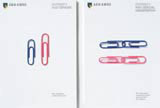An inward-facing outlook
Internal branding is increasingly being seen to be as important as a company’s public persona. Hannah Booth looks at design’s influence on staff morale

We’ve all been on hold to a large multinational, gone into its automated telephone system hell before dealing with a dispirited, unhelpful employee – often making a mockery of the big brand campaign that prompted us to call in the first place.
The combination of call centre technology and the growth in service-oriented organisations means staff now play an increasingly public role in delivering a brand. As a result, internal branding, staff brand engagement or internal communications – call it what you will – is assuming greater importance for clients, as they seek to squeeze every ounce of equity from their brands and gain an advantage over rivals.
And consultancies are capitalising on the sector’s growth. Interbrand announced last month it had merged with internal communications specialist Smythe Dorward Lambert (DW 29 May). Earlier this year, Enterprise IG launched an internal communications division, Enterprise Business and Brand Engagement (DW 23 January).
Headed by president Kevin Thomson, the latter works with clients including More Than, Vodafone and Amex on internal communications. He believes that it is the only area left that allows companies to truly differentiate.
‘Companies can’t squeeze costs or prices anymore. The emotional value of a brand is now a major point of difference,’ he says. ‘Employees can build and destroy a brand, and companies realise they must address the situation.’
A look at recent corporate scandals led by employee behaviour, such as those at Enron and the New York Times, appears to back that up.
CDT Design managing creative partner Neil Walker says in an increasingly competitive market it’s vital to engage staff first. Companies are realising that improving brand awareness internally means the organisation will do a more convincing job promoting it externally, which in turn adds value, says Walker.
‘Clients have moved their focus internally. It’s a cultural shift; people are more valued now,’ he asserts.
The physical manifestation of internal communications can take many forms. Intranet, extranet, letterheads, computer presentations, support materials and environmental graphics such as signage all communicate brand values.
But internal branding is more sophisticated than just ‘slapping a logo’ on to everything, which can appear heavy-handed, says Walker. ‘A brand is better reflected more subtly in elements such as typography, wit and quality of manufacturing,’ he believes.
For example, Enterprise Business and Brand Engagement created a neat twist on the corporate line for client More Than. Externally, the strapline read, ‘Don’t accept less than More Than’ and for employees, ‘Don’t give less than More Than’.
The Field managing director Simon Barbato believes internal branding should be different to its external counterpart.
‘External branding is aspirational, it’s all about trying to change people’s attitudes and behaviour. That doesn’t work internally – people know the reality of the company, warts and all. Internal communications must be more realistic and dig deeper to find a company’s true values,’ he says.
This means it’s often better to undertake internal branding first, says Barbato. ‘Once a brand’s true values are ascertained, the external branding work becomes easier, more of a badging exercise. Employees can become brand ambassadors, which makes it easier to sell it externally.’
CDT works on internal communications projects with several clients, most recently City & Guilds and Dutch bank ABN Amro. The former has a focused internal branding campaign, called First Stop, driven by head of group marketing Joanna Causon.
The scheme has run in tandem with City & Guilds’ external rebrand by CDT and Brandsmiths, which was unveiled last September (DW 26 September 2002). Causon has given 54 employees the role of ‘brand champion’, with the job of ensuring colleagues ‘live and breathe’ the brand at work.
The champion approach works because, instead of filtering down from ‘the top’, it comes from respected peers, Causon believes.
But what happens when employees couldn’t care less about the company brand? It can be a problem, Causon admits. ‘In truth, some [staff] will find it easier than others, but you have to keep demonstrating how their attitude affects the entire company’s image,’ she says.
Smythe Dorward Lambert managing director Ian Buckingham believes internal change must initially be driven from the top, rather than from peers. ‘Senior staff must be role-models for a company’s brand strategy,’ he says, though he admits employees are becoming less tolerant of spin and don’t want ‘lectures’ on company values.
But however effective the visual aspects of an internal scheme, if the reality of a company doesn’t fit the brand image it’s pushing, then any communication is wasted. ‘The brand has to be a true reflection of a company, based in reality,’ says Walker.
And if it’s not its employees, particularly those face-to-face with customers every day, who will take the initial flack.
The benefits of internal branding extend to consultancies too. Barbato believes they can create more effective external work by understanding the brand intimately.
‘Working from the inside out gives consultancies the opportunity to own the brand on a deeper level. They may design the logo, create the colourways, but they need to “own” the spiritual aspect of a brand too,’ he says.
It seems consultancies could do a lot worse than to extol the virtues of internal branding. It adds value to a brand, it keeps employees happy and it helps groups extend their work with clients. Which makes good sense all round.
-
Post a comment



